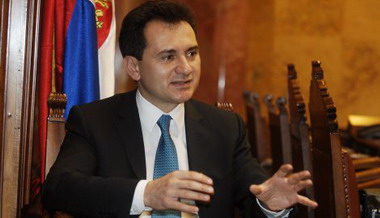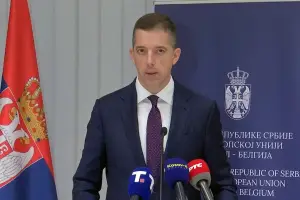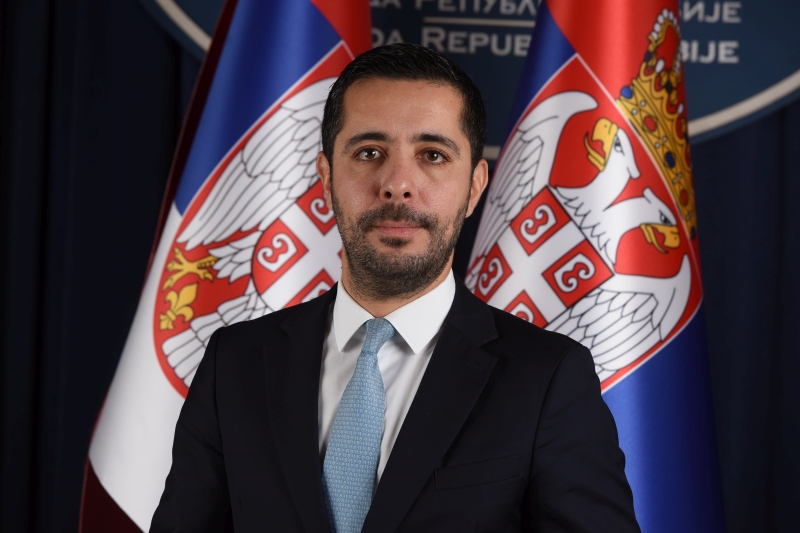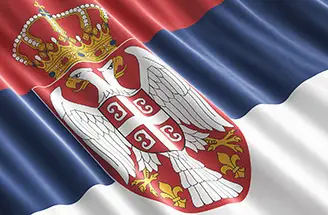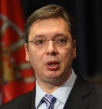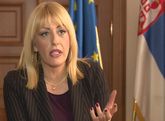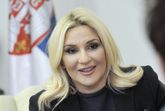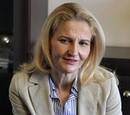Q:
A:
Investment in science must increase
Belgrade,
8 March 2010
Deputy Prime Minister for EU integration and Minister of Science and Technological Development Bozidar Djelic stated in an interview for today’s edition of the Blic daily that the government’s goal is to have investment in science reach 1% of GDP before 2015.
The Serbian government’s official website gives excerpts of the interview.
Plans for investment in science and technological development:
The first test of how serious we are when it comes to investment in Serbia’s scientific and technological development will be the beginning of the construction of the Petnica Research Centre, the purchase of equipment for the upcoming scientific and research cycle and the construction of flats for our scientific workers in Belgrade, Nis, Novi Sad and Kragujevac.
How can we motivate talented individuals who left Serbia to come back?
We will start with concrete steps. We have just agreed on a €200 million loan with the European Investment Bank (EIB), intended for science and technology, which will be duplicated from other sources. One tenth of these funds will be used to bring back our scientific diaspora. Invitations for actual projects will be sent to our scientists abroad around the middle of May. We intend to provide flats for the scientists who return to Serbia and grant them freedom in choosing their associates and equipment.
How many citizens with a faculty degree have left Serbia since 2000?
Around 17,000 graduates left Serbia in the 1990s. After 2000 emigration was somewhat reduced, but still another 2,000 graduate students left the country. We are establishing a serious data base on this topic at the website of the Ministry of Science, where citizens can also find the Serbian Strategy for Scientific and Technological Development for the period 2010–2015, as well as elements of the contract with the EIB.
How many of our scientists can be lured back to Serbia?
Our goal is to persuade around 400 of them to return over the next five years. The key is to bring back those who can help to strengthen the entire scientific community, bring in European funds and attract global technological companies to Serbia.
How can Serbia persuade future talented scientists to stay?
Our major problem is how to retain and develop the potential we have. This Strategy is primarily aimed at those who are now in Serbia and who can make the greatest contribution. During the last year we managed to raise salaries for researchers by 30%. The beginner’s salary is a little over RSD 40,000. Salaries at most faculties and institutes are quite decent and stand at €800 on average. A much more serious issue is the lack of technological companies that can hire our scientists. My key task in the next two years will be to establish contact with leaders of the 300 largest technological companies in the world, including Siemens, Ericsson, IBM, Novartis, HP and Microsoft, and convince them to open more branch offices in Serbia, instead of inviting our best scientists to leave the country and work for them abroad.
As soon as the parliament adopts the laws, we will start with the construction of the Petnica Research Centre together with blocks of flats in New Belgrade, intended for scientific workers. In May we will announce a tender for scientific equipment worth €50 million for research projects for the period 2011–2015. Next year we will start constructing a centre for the promotion of science in Belgrade.
How much will be set aside for science in 2015, because by then all elements of the Strategy will have been implemented?
Serbia is setting aside around €100 million for science, or 0.3% of GDP, which means we are at the very bottom in Europe. European countries have set their goal at 3% of GDP before 2020. We should do better this year, namely set aside between 0.4% and 0.5% of GDP, provided we start implementing the EIB loan. The plan is to reach 1% of GDP in 2015, ie around a half a billion Euros, with a major proportion coming from private funds.
Plans for investment in science and technological development:
The first test of how serious we are when it comes to investment in Serbia’s scientific and technological development will be the beginning of the construction of the Petnica Research Centre, the purchase of equipment for the upcoming scientific and research cycle and the construction of flats for our scientific workers in Belgrade, Nis, Novi Sad and Kragujevac.
How can we motivate talented individuals who left Serbia to come back?
We will start with concrete steps. We have just agreed on a €200 million loan with the European Investment Bank (EIB), intended for science and technology, which will be duplicated from other sources. One tenth of these funds will be used to bring back our scientific diaspora. Invitations for actual projects will be sent to our scientists abroad around the middle of May. We intend to provide flats for the scientists who return to Serbia and grant them freedom in choosing their associates and equipment.
How many citizens with a faculty degree have left Serbia since 2000?
Around 17,000 graduates left Serbia in the 1990s. After 2000 emigration was somewhat reduced, but still another 2,000 graduate students left the country. We are establishing a serious data base on this topic at the website of the Ministry of Science, where citizens can also find the Serbian Strategy for Scientific and Technological Development for the period 2010–2015, as well as elements of the contract with the EIB.
How many of our scientists can be lured back to Serbia?
Our goal is to persuade around 400 of them to return over the next five years. The key is to bring back those who can help to strengthen the entire scientific community, bring in European funds and attract global technological companies to Serbia.
How can Serbia persuade future talented scientists to stay?
Our major problem is how to retain and develop the potential we have. This Strategy is primarily aimed at those who are now in Serbia and who can make the greatest contribution. During the last year we managed to raise salaries for researchers by 30%. The beginner’s salary is a little over RSD 40,000. Salaries at most faculties and institutes are quite decent and stand at €800 on average. A much more serious issue is the lack of technological companies that can hire our scientists. My key task in the next two years will be to establish contact with leaders of the 300 largest technological companies in the world, including Siemens, Ericsson, IBM, Novartis, HP and Microsoft, and convince them to open more branch offices in Serbia, instead of inviting our best scientists to leave the country and work for them abroad.
As soon as the parliament adopts the laws, we will start with the construction of the Petnica Research Centre together with blocks of flats in New Belgrade, intended for scientific workers. In May we will announce a tender for scientific equipment worth €50 million for research projects for the period 2011–2015. Next year we will start constructing a centre for the promotion of science in Belgrade.
How much will be set aside for science in 2015, because by then all elements of the Strategy will have been implemented?
Serbia is setting aside around €100 million for science, or 0.3% of GDP, which means we are at the very bottom in Europe. European countries have set their goal at 3% of GDP before 2020. We should do better this year, namely set aside between 0.4% and 0.5% of GDP, provided we start implementing the EIB loan. The plan is to reach 1% of GDP in 2015, ie around a half a billion Euros, with a major proportion coming from private funds.

